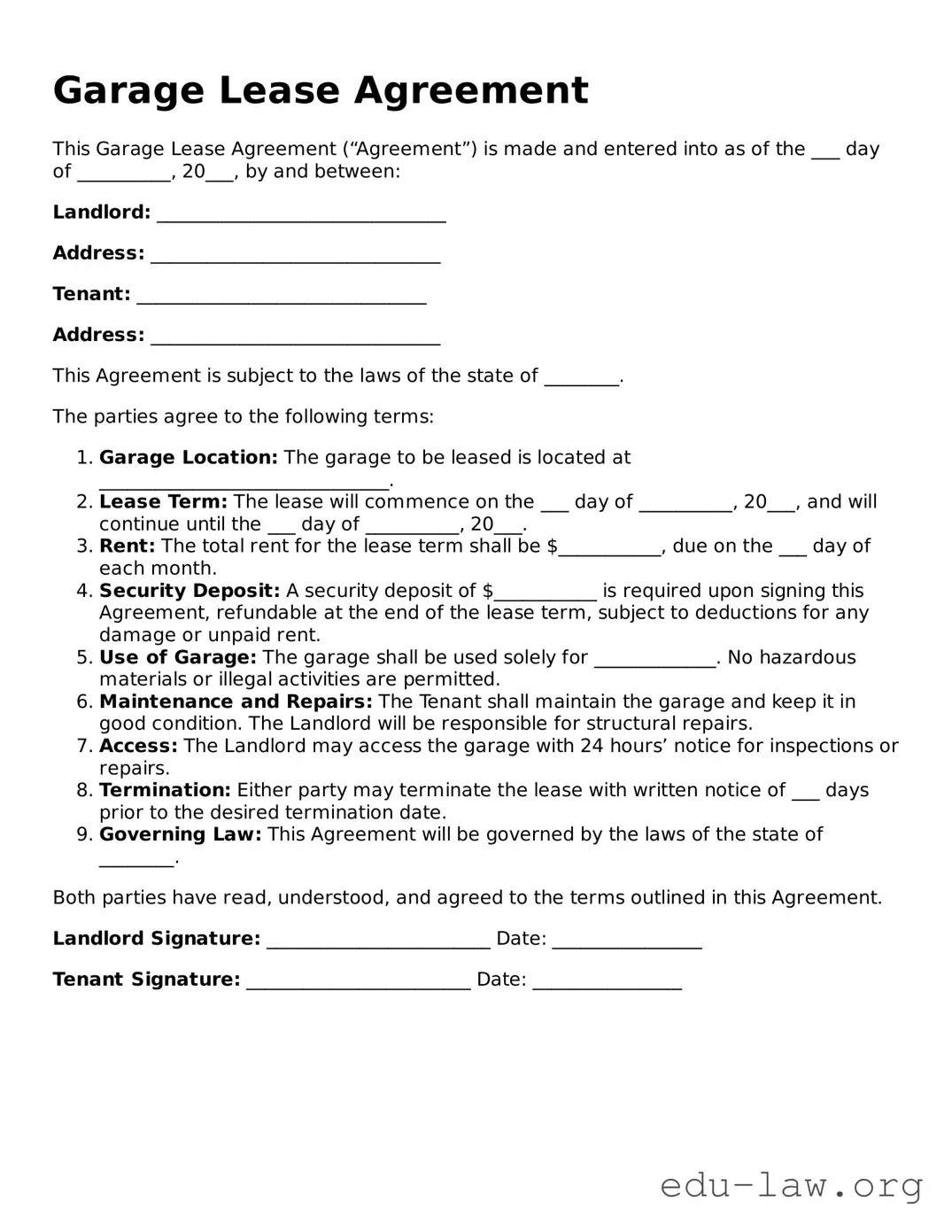What is a Garage Lease Agreement?
A Garage Lease Agreement is a legal document outlining the terms and conditions for renting a garage space. It specifies the responsibilities of both the landlord and tenant, including payment details, duration of the lease, and any restrictions related to the use of the garage.
Who typically uses a Garage Lease Agreement?
This agreement is commonly used by property owners who want to rent out their garage space to individuals needing extra storage or parking solutions. Tenants may include residents of an apartment complex or homeowners in need of a safe place for their vehicles or belongings.
What key terms should be included in a Garage Lease Agreement?
Essential terms include the lease duration, monthly rent amount, payment deadlines, security deposit details, maintenance responsibilities, and termination clauses. It is also important to describe the permitted use of the garage and any restrictions on activities that may take place there.
How do I determine the rental price for a garage?
Several factors can influence the rental price of a garage, including location, size, and demand within the area. Researching similar rental listings can provide a baseline for setting a competitive price. Additionally, consider any unique features, such as security or accessibility, that may justify a higher rate.
Is a security deposit necessary for a Garage Lease Agreement?
A security deposit is often included as part of the lease agreement. It serves as a financial safeguard for the landlord against potential damages or unpaid rent. The deposit amount should be clearly stated in the agreement and typically returned to the tenant at the end of the lease, provided there are no deductions for damages.
Can I use a Garage Lease Agreement for commercial purposes?
Yes, a Garage Lease Agreement can be customized for commercial use, such as for businesses needing storage or parking for commercial vehicles. However, it’s essential to outline any specific requirements or regulations that may arise from this type of usage, as commercial leases may have different implications.
What happens if the tenant wants to terminate the agreement early?
The ability to terminate the lease early typically depends on the terms outlined in the agreement. There should be a clause specifying the notice period required for early termination and any potential penalties or fees that may apply. It’s crucial for both parties to understand these conditions before signing the agreement.
Are there any local laws that affect Garage Lease Agreements?
Yes, local laws and regulations can influence the terms of a Garage Lease Agreement. For example, some areas may have specific rules governing rental agreements, such as tenant rights, eviction processes, and property maintenance. Reviewing these laws ensures that the agreement is compliant and protects the rights of both parties.
How should disputes be resolved according to the Garage Lease Agreement?
The agreement should include a clause detailing how disputes will be handled, often encouraging mediation or arbitration before proceeding with legal action. This approach helps both parties address issues amicably and can save time and expenses compared to traditional court proceedings.
Do I need an attorney to draft a Garage Lease Agreement?
While it is not legally required to hire an attorney, consulting with one can provide valuable insights and ensure that the agreement protects your interests. A knowledgeable attorney can help tailor the lease to meet specific needs and navigate any legal complexities associated with renting garage space.
